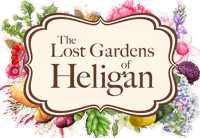Wildflowers & Nature’s Patchwork
Step into Heligan’s wildflower-rich landscapes and explore the dazzling diversity of native plants that stitch together our countryside. In this hands-on workshop, students become plant detectives, pollinator protectors and nature-inspired artists as they investigate why wildflowers matter — not just for bees and butterflies, but for entire ecosystems and our future too.
Through guided meadow walks, interactive games and creative activities, children learn how wildflowers support biodiversity, food chains and climate resilience. They’ll uncover how humans and nature are connected by these small but mighty plants — and leave inspired to protect the patchwork of life all around them.

Learning Objective
Students will discover the beauty, biology and ecological importance of wildflowers. Through guided exploration, games and creative activities, they’ll understand how wildflowers support biodiversity, pollinators and healthy ecosystems — and how protecting them helps secure the future of nature and food.
Curriculum Links
KS1 (Ages 5–7)
- Science: Identify common wild plants; basic needs of plants; seasonal changes.
- Geography: Local habitats; recognising features of rural landscapes.
- Art/PSHE: Observing nature closely; expressing ideas through sensory and creative activities.
KS2 (Ages 7–11)
- Science: Plant reproduction and life cycles; pollination; habitats and interdependence.
- Geography: Human impact on landscapes; local environmental change.
- PSHE: Stewardship, environmental care and making positive choices for nature.
KS3 (Ages 11–14)
- Biology: Ecology, plant adaptations, biodiversity loss, species interactions.
- Geography: Land use, conservation, ecosystem services.
Citizenship: Role of humans in protecting biodiversity; local and global responsibility.
